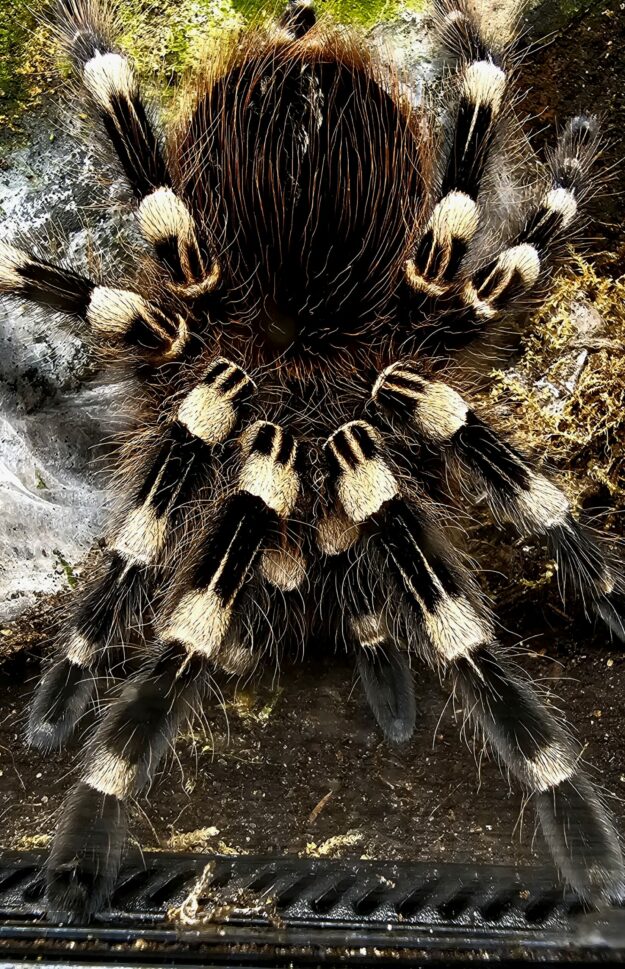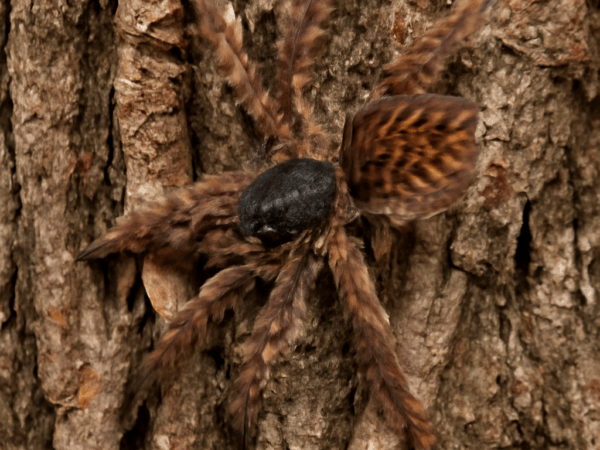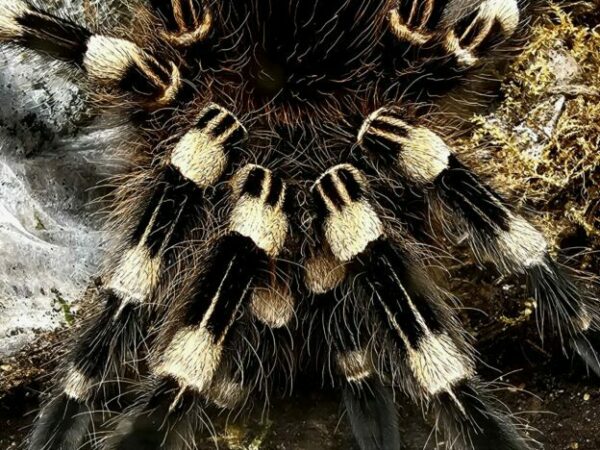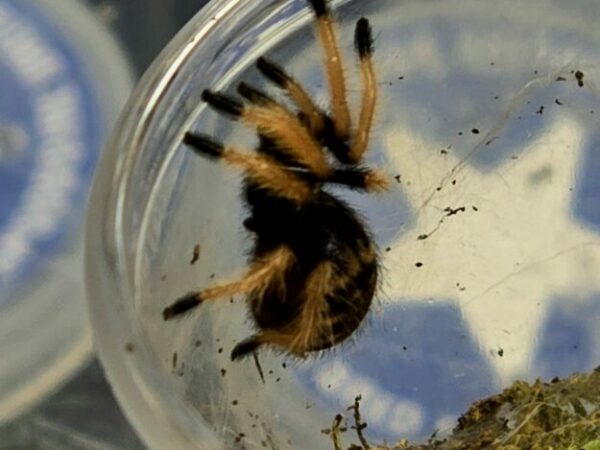Description
Acanthoscurria geniculata (Brazilian whiteknee tarantula) is a robust, terrestrial tarantula native to the humid forests of northern Brazil. Adults commonly reach legspans of 6–8 inches (15–20 cm) and are notable for their dramatic coloration: a velvety black or deep brown carapace and abdomen contrasted by distinctive cream-to-white bands on the femora and sometimes other leg segments. This striking pattern makes them one of the most visually recognizable large New World tarantulas.
Temperament and behavior: A. geniculata is generally considered docile for a large species but can be defensive if provoked. They’re primarily terrestrial and spend much time on or near the ground, often creating simple silk retreats under debris or within shallow burrows. While not particularly fast to flee, they can deliver a comfortable threat display (raising front legs) and may flick urticating hairs if stressed — a defensive behavior common to New World tarantulas that can irritate skin and mucous membranes.
Care in captivity: Their robust nature and tolerance for a range of conditions have made them popular among hobbyists. They prefer a roomy, secure enclosure with moderate humidity, a substrate deep enough to allow burrowing or web retreats, and stable warm temperatures (roughly 75–85°F / 24–29°C). Provide hiding places (cork bark, half-logs) and avoid overly wet conditions that could lead to mold. As opportunistic feeders, adults accept a variety of appropriately sized insects; juveniles require more frequent, smaller feedings. Respectful handling is possible with calm individuals but generally not recommended as the first choice — minimizing stress to the spider and risk to the handler is wise.
Lifespan and reproduction: Females live significantly longer than males; females can live well over a decade in captivity, while males often mature earlier and have shorter post-maturity lifespans. Breeding is practiced by experienced hobbyists, but it requires careful introduction and post-mating management to ensure safety for both spider and offspring.
Conservation and notes: While not currently a major conservation concern, A. geniculata’s wild populations can be affected by habitat loss. Responsible hobbyists prioritize captive-bred specimens to reduce pressure on wild populations. Their dramatic appearance, hardy nature, and fascinating behaviors make them a compelling species for those interested in keeping tarantulas, provided owners follow good husbandry and ethical sourcing practices.





Reviews
There are no reviews yet.